This month we celebrate the addition of the latest English translation of Andreas Vesalius' De Humani Corporis Fabrica Libri Septem to the Otto Hirschfeld Memorial Collection at the Herston Health Sciences Library.
As part of the celebrations, Emeritus Professor John Pearn AO RFD delivered a talk Vesalius' Fabrica of the Human Body - A Medical Milestone at the Herston Health Sciences Library.
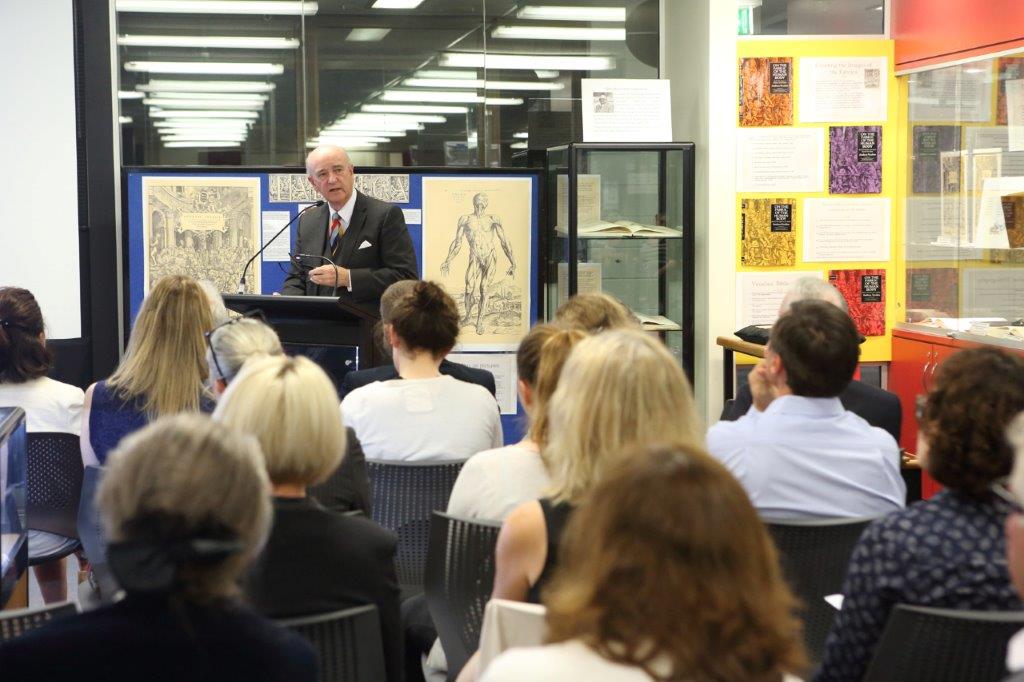
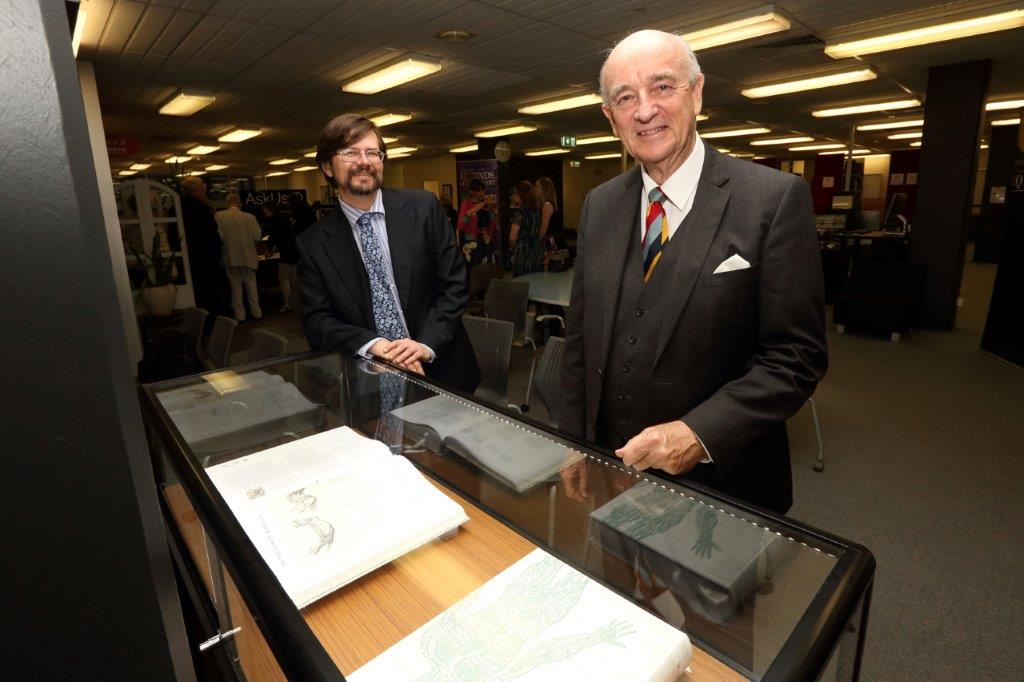
A new era in anatomical and medical thinking
In 1543, the great book of anatomy De Humani Corporis Fabrica Libri Septem (The Fabric of the Human Body in Seven Volumes) was published, ushering in a new era in anatomical and medical thinking.
The author of the work now known as 'the Fabrica' was Andreas Vesalius of Brussels, a Flemish anatomist who had developed an appreciation of anatomy through direct observation by dissecting cadavers. Vesalius had studied anatomy and medicine in the traditions of Galen but would come to question Galenic anatomy when he noted discrepancies between the traditional works and his own observations. In the Fabrica, Vesalius points out the shortcomings of many concepts which had their origins in animal anatomy.
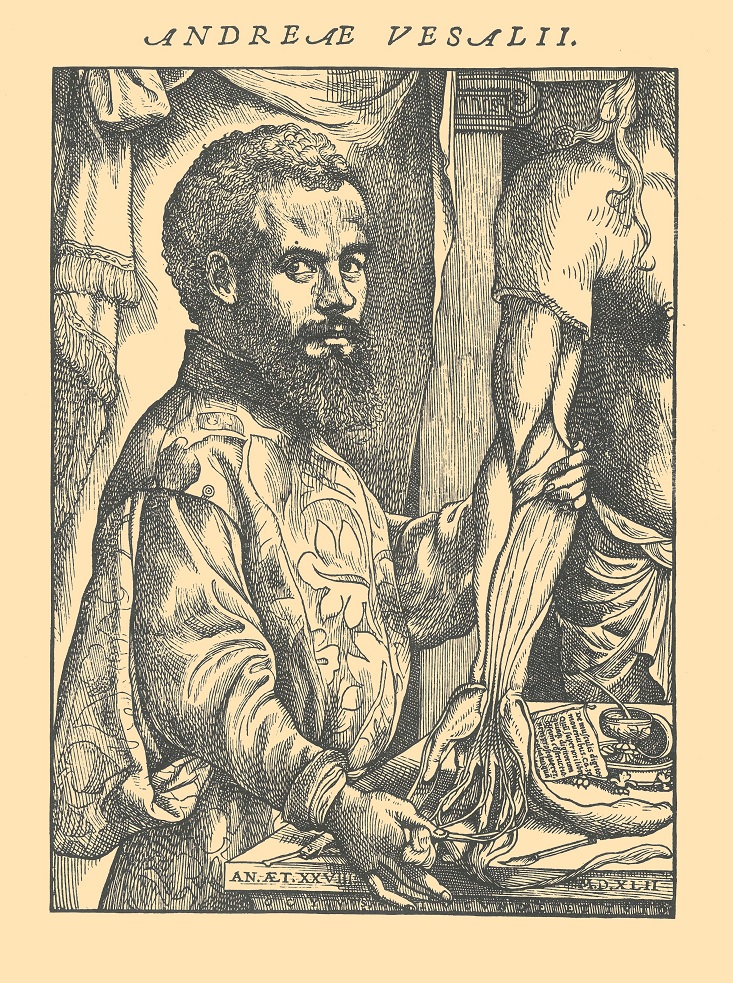
Combination of innovative art and text
The Fabrica broke new ground in anatomical illustration with artwork created to a high standard of accuracy that had not been seen before. The exacting specifications of Vesalius ensured that the illustrations were based on observation. The combination of innovative art and text that challenged anatomical thinking of the time resulted in a book that would help define the course of anatomy, medicine and surgery for centuries to come.
The Fabrica was published in large format and featured over 200 beautifully designed large plates and many other smaller images which served to visually supplement the text. The artist of the Fabrica is not known, but it is thought to be Jan Stephan van Calcar a pupil of Titian.
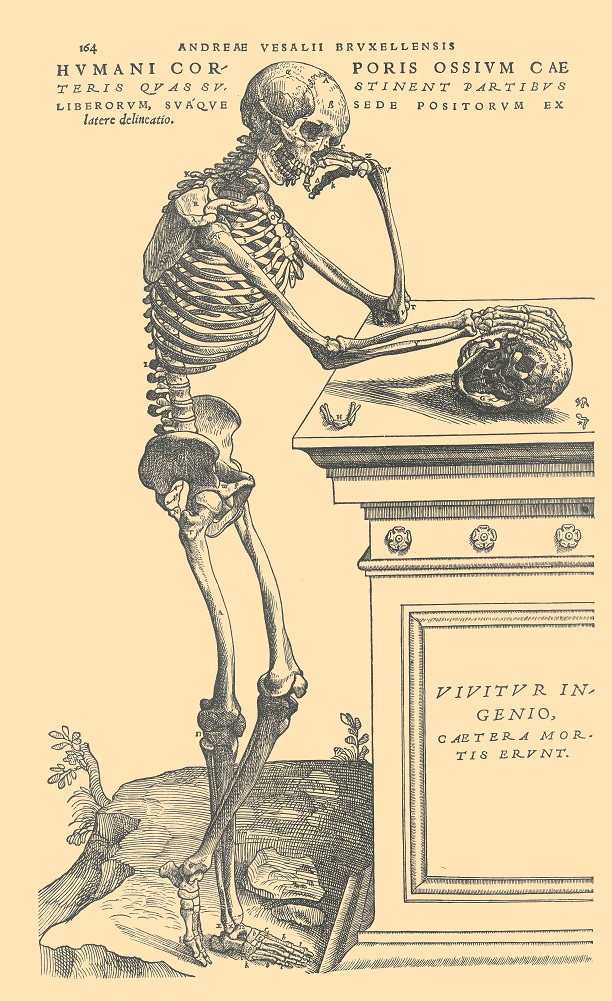
First English use and translations
- The first English use of the Fabrica is the Compendiosa Totius Anatomie Delineatio (1553) by Thomas Geminus, which contains plagiarised images of the Fabrica produced in copperplate.
- The first true English translation of the Fabrica would have to wait over 400 years until the publication of On the Fabric of the Human Body, a translation of De Humani Corporis Fabrica Libri Septem by Norman publishing.
- William F. Richardson and John B. Carman translated the original 1543 version of the Fabrica into the five volume set of On the Fabric of the Human Body.
- The latest translation of the Fabrica is The Fabric of the Human Body a two volume edition by Daniel H. Garrison & Malcolm H. Hast published by Karger in 2014. The Karger version of the Fabrica incorporates information both the 1543 and 1555 editions of the Fabrica and includes notes from Vesalius’s other works. The new Karger Edition of the Fabrica is one of the most recent acquisitions to the Otto Hirschfeld Memorial Collection located in the Herston Health Sciences Library.
Otto Hirschfeld Memorial Collection
The Otto Hirschfeld Memorial Collection is funded by the Otto Hirschfeld Memorial Fund, a fund set up in 1958 to commemorate the late Chancellor of The University of Queensland, Dr Otto Hirschfeld. The Fund is used to collect medical classics and early and important Australian medical literature.
We were very honoured to have members of the Otto Hirschfeld family with us on the night, including Otto's son Brian Hirschfeld.
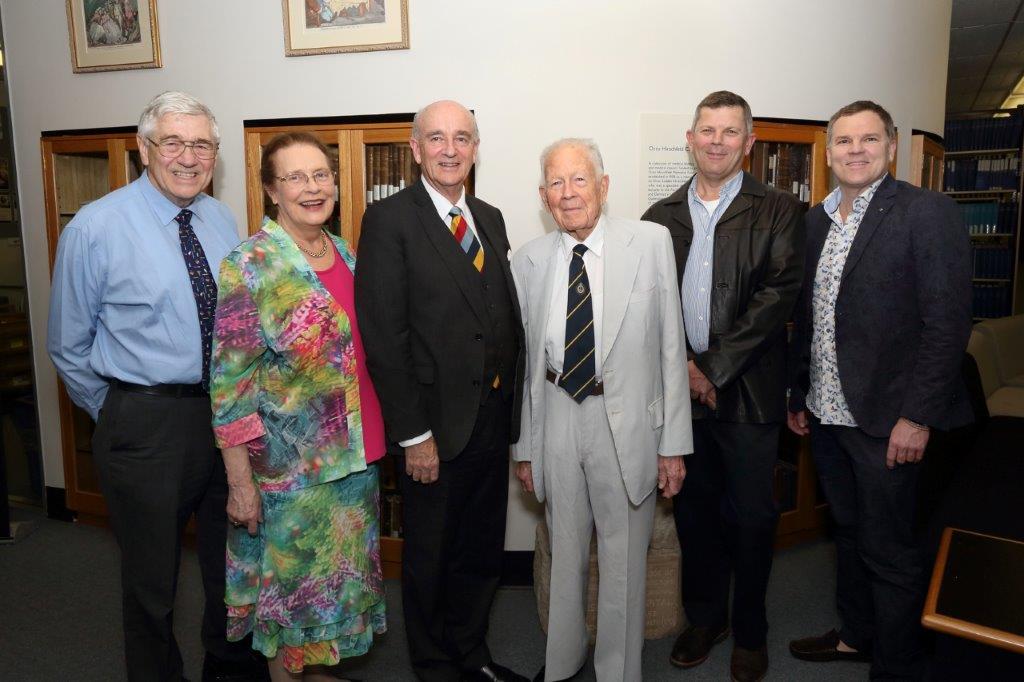
The Otto Hirschfeld Memorial Collection includes both modern English translations of De Humani Corporis Fabrica Libri Septem - The Fabric of the Human Body (2014) and On the Fabric of the Human Body (2009).
Read more about the generous gifts that have helped us to grow our research collections.
References
Beard, J. (2008). "Fabrica." BMJ : British Medical Journal 336(7637): 221-221.
Edinburgh University Library. (2007). "Thomas Geminus's Compendiosa totius Anatomie delineatio, 1545." Retrieved August 30, 2016, from http://www.arsanatomica.lib.ed.ac.uk/geminus.html.
Hurwitz, B. and R. Richardson "The English Vesalius." The Lancet 383(9925): 1285-1286.
Karger Publishing. (2015). "Transforming Vesalius." Retrieved August 30, 2016, from http://www.vesaliusfabrica.com/.
Larkey, S. V. (1933). "The Vesalian compendium of Geminus and Nicholas Udall's translation: their relation to Vesalius, Caius, Vicary and De Mondeville." The Library s4-XIII(4): 367-395.
Vesalius, A., J. B. d. C. M. Saunders and C. D. O'Malley (1950). The illustrations from the works of Andreas Vesalius of Brussels : with annotations and translations, a discussion of the plates and their background, authorship and influence, and a biographical sketch of Vesalius / by J.B. de C.M. Saunders and Charles D. O'Malley. Cleveland, Ohio, Cleveland, Ohio : The World Publishing Company.